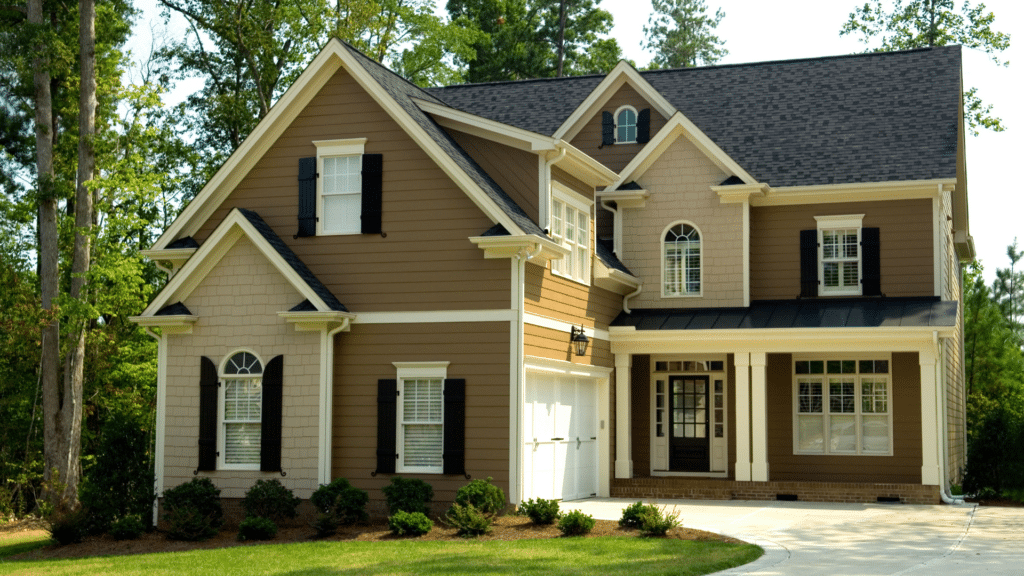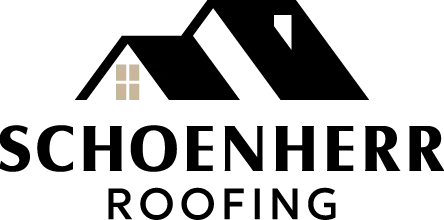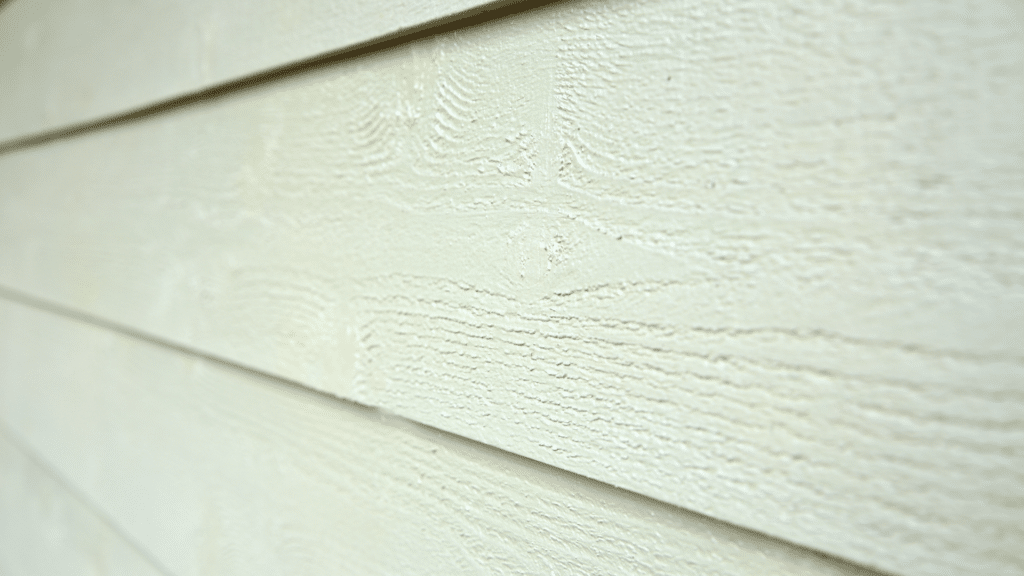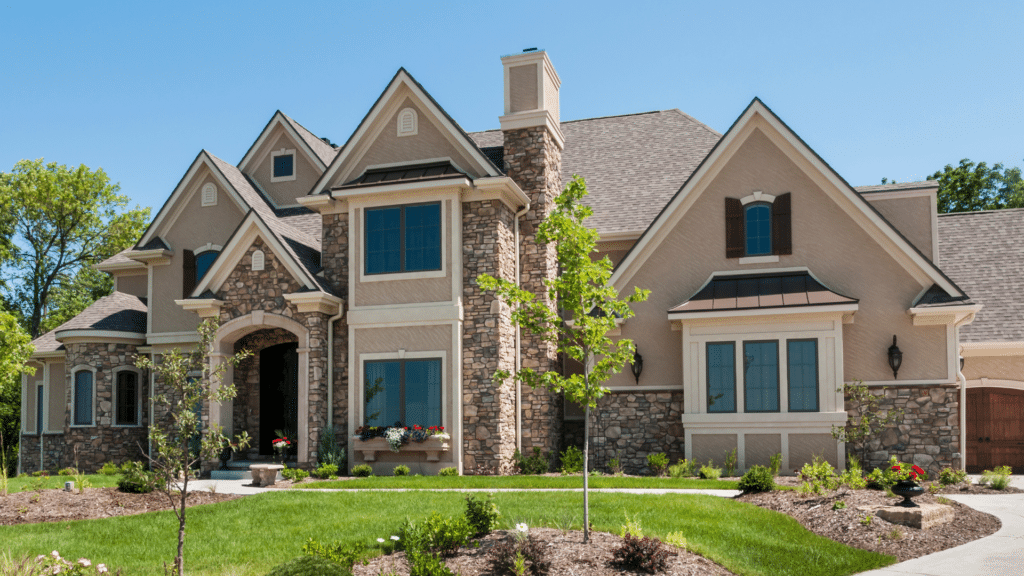Key Highlights
- Durable: Made from a combination of cement, sand, and cellulose fibers, James Hardie siding is remarkably durable and capable of lasting up to 50 years or more.
- Style Options: James Hardie offers several different types of siding, ranging from traditional, horizontally oriented lap panels to thick, vertically oriented architectural panels to small siding pieces, designed to look like cedar shingles.
- Impressive Warranty: All James Hardie siding products are backed by the manufacturer’s 30-year limited (transferable) warranty, and planks with a ColorPlus finish enjoy 15 years of warranty coverage for cracking, fading, or peeling.
- Low Maintenance: James Hardie siding does not need to be repainted frequently like wood, and it is easier to clean than many other types of siding.
- Finish and Texture Options: James Hardie siding is available in your choice of more than 700 colors and several textures, including smooth, beaded, and wood grain finishes, among others.
The Basics of Fiber Cement Siding
For many years, wood was the only home siding material available. And while wood is certainly attractive and available in several different styles and shapes, it does present a few important shortcomings.
For starters, wood siding is vulnerable to termites. It will also rot when exposed to the elements for long periods of time and must be repainted periodically. Wood siding is also highly flammable and difficult to install. So, building product manufacturers began trying to develop alternatives.
By the 1950s, vinyl and aluminum siding had both reached the market. Because they solved some of the problems with termites and essentially eliminated the need for frequent repainting, they became pretty popular. However, they still weren’t ideal. Many homeowners disliked the way aluminum siding looked, and though less combustible than wood, vinyl siding still represented a fire hazard (and releases toxic gases when burned).
So, building industry professionals pressed on and continued trying to develop a better siding product. Eventually, in the 1980s, James Hardie invented a new type of siding. Called fiber cement siding, it solved many of the problems other kinds of siding presented and became a leading choice among homeowners and builders alike.
Why James Hardie Fiber Cement Siding Stands Out
James Hardie® fiber cement siding is quite different from aluminum or wood siding, in that it is made by mixing several different ingredients together. Specifically, it is made from a combination of:
- Cement: The primary constituent of James Hardie siding, cement serves as the mixture’s base and makes it both durable and fire-resistant.
- Sand: Sand improves the texture of the mixture and provides impact- and wear-resistance that cement alone couldn’t achieve.
- Cellulose Fibers: Wood pulp fibers are used to add even greater strength to the mixture, but they also provide the panels with increased flexibility.
This combination of ingredients results in a very long lasting material that provides a number of unique benefits and advantages when compared to other options. Some of the most noteworthy include:
Improved Durability
Thanks to their composition, James Hardie siding panels are incredibly durable. They’re resistant to rot, insects (including termites), severe weather, UV rays, and fire. Typically, these siding panels will last for about 30 to 50 years.
Low Maintenance Requirements
Unlike wood, which requires regular maintenance and needs to be repainted every few years to remain attractive, Hardie Plank siding only needs to be repainted every 10 to 15 years.
It’s also easy to clean Hardie Plank siding when necessary. You can simply use a hose or soft scrub brush to remove most dirt and dust. If necessary, you can pressure wash the siding to address stubborn spots, just be sure to use a low-pressure, fan-shaped discharge pattern rather than a high-pressure jet setting.
Aesthetic Options
Hardie Plank siding comes in a dizzying array of options. It comes in five different siding styles, 19 different profiles and textures, and more than 700 different colors. You can also order the siding panels in primed condition, so that you can paint them any color you like.
It’s Eco-Friendly
James Hardie Plank siding is not only made from natural, abundantly available materials, but manufacturing the actual planks is also considered to be more environmentally friendly than the process of making some other siding products, such as vinyl planks. Additionally, Hardie Plank Siding is easy to recycle once you eventually need siding replacement.

James Hardie Siding: Five Different Styles of Siding to Choose From
Aside from the advantages outlined above, James Hardie cladding is also available in several different aesthetic siding styles, ensuring that you should be able to find the perfect match for your specific home.
Hardie Plank Lap Siding
The original type of James Hardie siding offered, these horizontally oriented planks are available in six different profiles:
- Select Cedarmill
- Smooth
- Beaded Select Cedarmill
- Beaded Smooth
- Custom Colonial Roughsawn
- Custom Colonial Smooth
Hardie Plank Lap Siding is available in several plank widths, which vary by the profile selected, but they are all 144 inches long and 0.312 inches thick.
Hardie Artisan Siding
Hardie Artisan Siding Panels are also horizontal boards, but they are much thicker than Hardie Plank Traditional Lap Siding panels, and they also feature deep shadow lines. They are available in your choice of four profiles:
- V-Groove
- Shiplap
- Square Channel
- Lap
Hardie Artisan Siding panels are available in widths ranging from 7.25 inches to 10.25 inches, and they are all 144 inches long and 0.625 inches thick.
HardiePanel Vertical Siding
Hardie’s panel product line consists of vertically oriented planks, which are available with your choice of four different textures:
- Select Cedarmill
- Smooth
- Stucco
- Sierra 8
In contrast to some of the other Hardie siding planks, the brand’s panels are all either 16 or 48 inches wide and 0.312 inches thick. Their lengths, however, vary from 96 to 144 inches.
Hardie Architectural Panel
Designed to offer a sleek, modern aesthetic, Hardie Architectural Panels are available in your choice of three textures:
- Fine Sand
- Mounded Sand
- Sea Grass
Hardie Architectural panels are all 48 inches wide, 0.0 inches thick, and available in lengths ranging from 96 to 144 inches.
Hardie Shingle Siding
Designed to mimic the appearance of traditional cedar shingles, Hardie Shingle Siding is available in two different profiles:
- Straight Edge Panel
- Staggered Edge Panel
Both profiles are offered in the same size and measure 48 inches long, 15.25 inches wide, and 2.326 inches thick.
*It is important to note that the availability of different profiles and colors varies from one geographic region to the next.
Key Features and Innovations
When first developed, James Hardie Plank was a revolutionary siding product. And it continues to distinguish itself as a leading siding product, despite the fact that several other cement-based siding planks have entered the market.
A few of the key features and innovations of James Hardie siding include:
- ColorPlus Technology: Many James Hardie siding products are available with a ColorPlus finish, which is baked-on by the factory to provide improved color retention and help prevent fading, chipping, and peeling.
- Active Moisture Barrier Technology: James Hardie products feature moisture-barrier technology, which helps prevent water from seeping behind the siding and protect the planks from mold and mildew.
- Engineered for Wind Resistance: While the specific wind resistance ratings of different James Hardie products vary, they’re all engineered to withstand strong winds, and some are rated for wind speeds of up to 150 miles per hour.
- Climate Protection: Most James Hardie siding products are sold in one of two versions that are specifically tailored for use in different climates; HZ5 panels are designed to withstand freezing temperatures and provide superior performance in cold climates, while HZ10 panels are designed to perform well in areas that experience extreme heat and humidity.
Key Specifications of James Hardie Siding
- Warranty: 30-year limited warranty (transferable)
- Wind Resistance: Varies by the specific product, but up to 150 miles per hour
- Weight Per Square Foot: Between 2.3 and 3.5 pounds per square foot, depending on the specific product
- Panel Thickness: 0.312, 0.625, or 2.326 inches, depending on the specific product
- R-Values: 0.5 to 0.6
- Fire Rating: Class A (the highest possible rating)
How Much Does James Hardie Siding Cost for a Home?
There are a number of factors and variables involved with determining the total price of installing James Hardie siding on your home, which makes generalizations tricky.
However, most homeowners will find that the material costs will range from about $5 to $12 per square foot, depending on the specific products selected. Installation costs will add another $3 to $7 per square foot, for a total installation cost of about $8 to $19 per square foot.
This means that total material and installation costs will usually be between $12,000 and $47,500 for average-sized, 1,500- to 2,500-square-foot homes.
Some of the factors that will help determine the exact price you’ll pay within this range include:
- Specific Product Selected: The pricing differs among the various types of James Hardie siding products offered. At the affordable end of the spectrum, James Hardie Lap Siding will usually cost between $3.50 and $6.00 per square foot, while more expensive products, such as HardiePanel Vertical Siding may cost up to $9.00 per square foot.
- Texture and Finish Options: For any given type of James Hardie siding, the finish and texture options selected will influence the price. Typically, smooth finishes are more affordable than options like the CedarMill texture, and unpainted (“primed for paint”) finishes will be more affordable than some of the premium color options offered.
- Your Home’s Design: If your home features a lot of intricate architecture or an unusual layout, your installer may have to complete more custom work, which may increase the overall price you’ll pay.
- Existing Siding Removal: If your home already has siding attached to it, you’ll also have to pay for the removal and disposal of the material.
How Does the James Hardie Siding Warranty Work?
James Hardie siding is backed by a 30-year limited warranty that provides coverage for problems including cracking, shrinking, deterioration, and manufacturing defects. It also covers damage from moisture absorption that causes swelling or warping (under normal conditions).
Like all warranties, the James Hardie siding warranty does feature a few exclusions. A few of the key exclusions include:
- Improper installation
- Inadequate or improper maintenance
- Acts of nature, ranging from hail to floods
- Vandalism
Additionally, cosmetic issues are not covered, unless the product itself is found to be defective. However, if you select one of the James Hardie ColorPlus Finishes, you’ll be covered by a 15-year warranty from fading, cracking, or peeling.
It’s important to note that the James Hardie siding Warranty is transferable. This means that if you sell your home during the initial 30-year coverage period, your home’s new owner will enjoy the protection provided. This, in addition to the general value James Hardie siding provides to a home, may help to increase your home’s appeal and ultimate sale price.

James Hardie Colors for Your Home
In addition to choosing a siding style, you can also purchase James Hardie siding in a mind-blowing variety of different colors. While not every product is available in every color in the manufacturer’s lineup, there are more than 700 options available in total. Suffice to say, most homeowners will have no trouble finding a color that matches their home and satisfies their own personal desires.
In fact, James Hardie makes it easy to find the colors you’d like, as the company’s website allows you to begin by selecting a basic color, such as green, brown, neutral, or blue. Once you’ve made your choice, a dropdown box opens and displays a number of specific options that are similar to that basic color. The site also has a color-search function, if you already know the color you want.
James Hardie 2025 Color of the Year: Evening Blue
Every year, the people at James Hardie select one hue from their expansive collection to represent the “Color of the Year.” In 2025, they’ve selected Evening Blue, calling it a “subdued gray-blue” that “evokes a clear evening sky,” the color was selected, in part, for the soothing effect some find that it provides. Blues are popular colors in general, so it seems likely that many homeowners will begin choosing Evening Blue for their homes’ exteriors.
Last year, James Hardie selected Mountain Sage, a versatile, grassy green, as the 2024 Color of the Year.
Selecting the James Hardie Siding Color for Your Home
It’s easy to become overwhelmed when perusing the color options James Hardie makes available. To help, we’ll provide a few key considerations you’ll want to think about below:
- The Architectural Style of Your Home: Classic or traditional house designs (including colonial, Cape Cod, and Victorian) usually look great when paired with white, beige, or gray siding. Modern homes, on the other hand, can handle bolder colors, ranging from black to red to deep blue. Meanwhile, bungalow-style houses can look great with green or rustic brown siding.
- Neighborhood Trends: While you may want your home to “pop” a little, you probably don’t want it to stick out like a sore thumb in your neighborhood, so try to match the siding style and colors of your neighbors’ homes. Don’t, for example, select a bright red siding color if most of the other houses around you are clad in tan, khaki, or cream tones. It’s also wise to check with your HOA before making a final decision, as some enforce rules regarding home colors.
- Your Surroundings: It’s also wise to think about the natural backdrop surrounding your home (particularly if your home is not located in a neighborhood). For example, earthy greens, browns, and grays often work well in forested areas, while bright blues, whites, and terracotta colors tend to look great in coastal areas.
- Your Home’s Size: Because light colors reflect a lot of sunlight, they can help make your home look larger. Dark colors create the opposite effect and make your home look smaller. But while people rarely want to make their home look smaller, dark colors can be useful for making individual sections of your home look smaller if you’d like to deemphasize them or draw attention to other portions of your house.
- The Climate: For the sake of energy efficiency and your family’s comfort, it’s important to consider the climate of your area when selecting a siding color. Stick with light-colored hues if you are in a warm area, as these will help reflect the sun’s rays and keep your house cooler. In cooler areas, opt for dark tones, as they’ll absorb sunlight and warm your home.
- Trim, Accent, and Roof Color: Think about the other colors on your home to ensure that it presents a cohesive aesthetic once you’ve had your new siding installed. Many homeowners like pairing contrasting colors (such as blue and white) with each other, but others prefer selecting analogous colors (such as brown and tan) instead.
- Your Personal Tastes: Above all else, keep your own tastes and desires in mind! After all, it is your house, and you’ll want to like what you see every time you pull in the driveway. Just try to balance your desires with the other factors outlined here.
Frequently Asked Questions: James Hardie Fiber Cement Siding
Still have questions about James Hardie siding? We’ve collected some of the things many homeowners want to learn more about below.
How long does James Hardie fiber cement siding last?
James Hardie siding is a very durable home product that may last for up to 50 years, and the material is backed by a 30-year limited warranty. With proper installation and regular cleaning, it is like to remain functional and retain its aesthetic appeal for decades.
Does Hardie fiber cement siding need to be painted?
Yes, to ensure it remains in good condition and looks good, Hardie siding must be painted. You can opt to have it finished at the factory or purchase “primed for paint” planks and have them painted in your choice of colors.
Does a Hardie Plank increase home value?
In most cases, James Hardie siding will increase your home’s value, as it is a durable product that looks great and offers a variety of other benefits, such as reduced heating and cooling costs.
What lasts longer, vinyl siding or Hardie siding?
Every situation is unique, but Hardie siding will usually outlast vinyl siding, when all other factors remain the same. Hardie siding often lasts up to 50 years, while vinyl typically lasts 20 to 40 years.
Can I install Hardie siding myself?
It is theoretically possible for homeowners to install Hardie siding, but professional installation is strongly advised. It is not only a big project for a homeowner to take on, but improper installation will also void your warranty.
Does James Hardie fiber cement siding rot?
James Hardie siding is designed to resist rot, but it is important that it is properly installed to prevent moisture from getting behind the planks.
Does James Hardie make board-and-batten style siding?
James Hardie does not offer “off-the-shelf” board and batten style siding, but they do offer a Batten Board Trim product, which can be used in conjunction with their vertical siding panels to achieve a board-and-batten siding style.
What is the downside of James Hardie fiber cement siding?
There aren’t many drawbacks to James Hardie siding. That’s part of the reason it has become such a popular choice over the last several decades. It is, however, more expensive than many other siding products. Nevertheless, because of the benefits it provides and the length of time it lasts (potentially exceeding 50 years), it provides excellent overall value.




